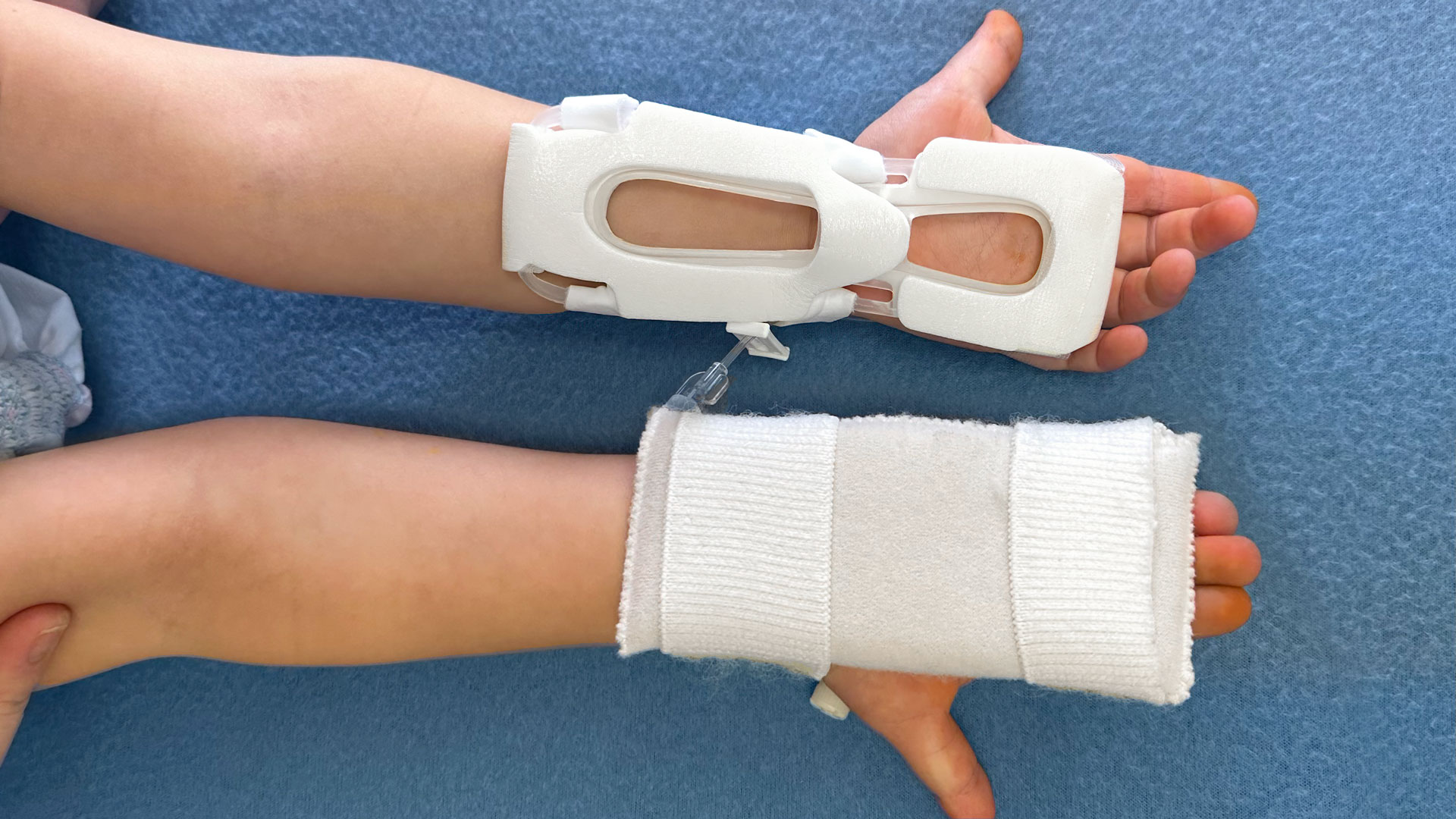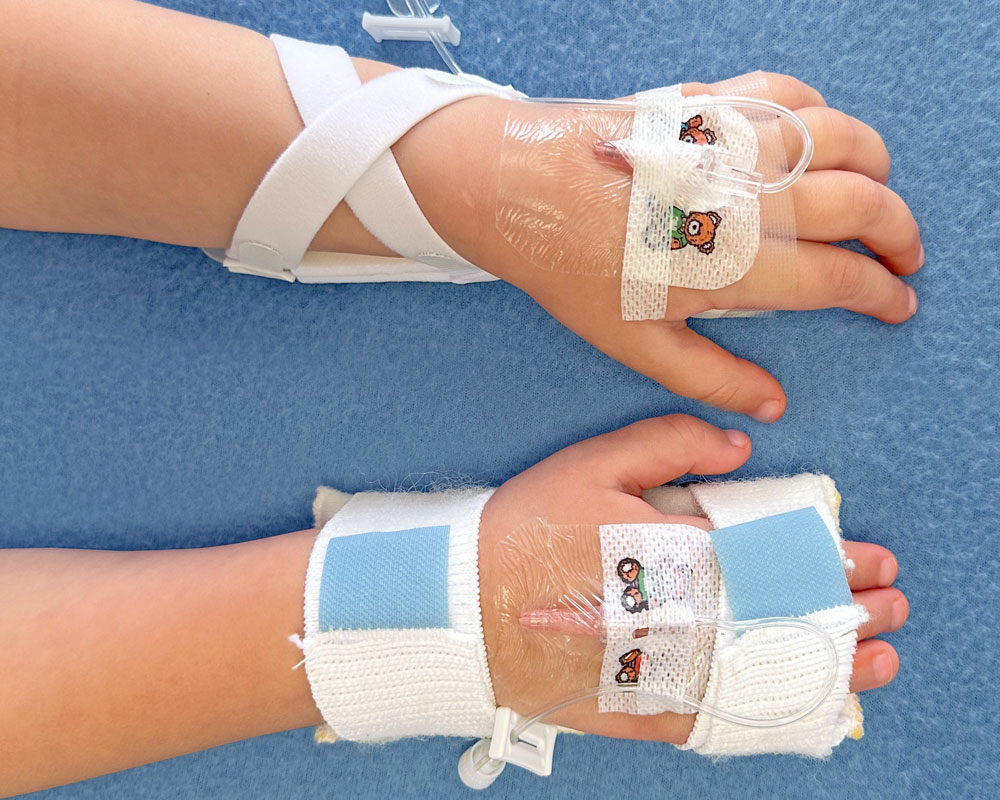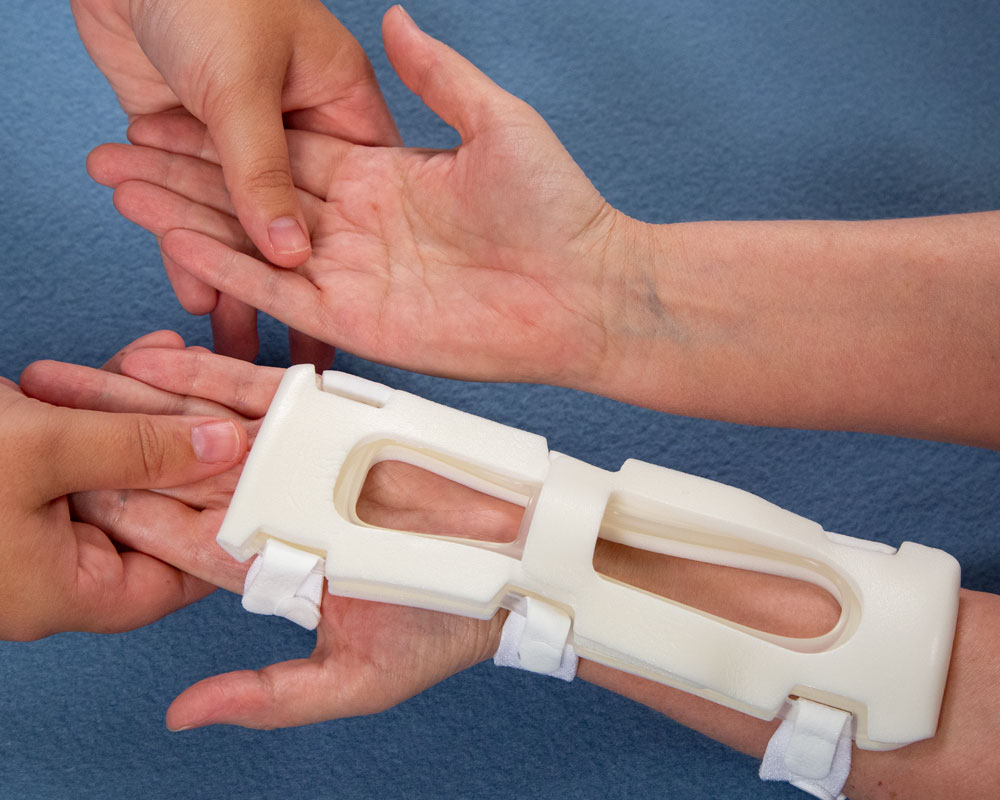IV Armboard vs. the TLC Splint: Which is Better?
Armboards are the traditional choice for IV joint stabilization, because their versatile design can help hospitals save money and storage space. However, the IV splint, including ergonomic armboards like the TLC Splint, has emerged as a new and popular option among nurses and patients. So, which product is the better IV joint stabilizer?
For many hospitals, the answer depends on multiple factors, including:
- Patient Safety and Comfort
- Staff Time Management
- Storage Capacity
- Cost
The guide below provides the pros and cons of both IV armboards and IV splints to help you determine which joint stabilizer is right for your organization.
Traditional Armboards for IV Therapy
Armboards have been used to stabilize areas of flexion, such as the hand, elbow, and foot, for many years. Most conventional armboards are flat with straps to fasten them to the limb, or they can be secured by taping them in place on the patient. They are not specific to a particular anatomical area, which enables nurses to use one product for several different IV placement sites.
-
(+) Pro: Equipment is Universal
Since there is typically only one size option for all patients, armboards reduce the time it takes nurses to gather the proper equipment for IV placement. Nurses do not have to spend time finding the correct product for each patient—the same armboard type is used regardless of the IV insertion site’s location.
-
(+) Pro: Lower Initial Costs
The universal design of an IV armboard may help hospitals keep initial costs down, making armboards an affordable choice for IV stabilization. They also eliminate the need to store multiple types and sizes of the same product, which frees up storage space.
-
(–) Con: Outdated Design
Although armboards may successfully stabilize IV sites, they do not utilize ergonomic design, which focuses on how people interact with a product. Many armboards contain cardboard or metal. Cardboard breaks easily, especially when nurses must bend the armboard to fit a patient, and metal prevents them from being used in MRI environments.
Traditional IV armboards often need medical tape to be secured. This tape can restrict circulation and is a skin irritant—as a result, the armboards tend to be stiff, limit mobility, and add to a patient’s discomfort. This can be especially challenging when nurses need pediatric or neonatal IV armboards.
-
(–) Con: Limited IV Site Access
Some armboards have straps so wide that they completely cover the IV site, which obscures visibility and prevents easy access. The armboard inhibits the ability to properly inspect the extremity, up to 24 times a day for pediatric and neonatal patients. This can make assessment a time-consuming process for nurses and medical staff, and a distressing process for patients. This obstacle can also allow common IV site complications, such as infiltrations/extravasations, to go undetected for longer periods of time.
While traditional armboards may help immobilize joints, they do not address the development of pressure ulcers. Peripheral IV catheters can cause pressure injuries to develop, especially in active patients. Pressure ulcers are prone to infection, require close monitoring, and may decrease patient satisfaction.
The TLC Splint: Ergonomically Designed
The TLC® Splint is an alternative to traditional armboards. They hold the joint in place for intravenous therapy, keeping the patient safe and comfortable during treatment. The straps do not cover the IV site, which provides greater visibility and access to nurses—and enables them to catch and treat IV site complications more efficiently.
-
(+) Pro: More Comfortable for Patients
The TLC Splints are ergonomically designed and contoured to fit specific body parts where IV lines are commonly placed. By offering different sizes and designs, IV splints ensure nurses can find the most effective and comfortable fit for their patient, regardless of the patient’s age and the location of their IV.
The TLC® Splint is ergonomically engineered to fit the anatomy of the wrist, elbow, or foot/ankle in order to stabilize the joint and reduce IV complications. This helps provide better alignment for the IV catheter in the blood vessel, which improves patient comfort and safety.
(+) Pro: Tailored to be Anatomically Specific
The TLC Splints come in a variety of sizes and extremity options. This can be especially helpful for younger patients. This wide range of sizes help nurses stabilize the IV line in a comfortable manner, so regardless of age, there is an ergonomic fit for everyone.
(+) Pro: Easier IV Site Access & Monitoring
All I.V. House® products, including the TLC Splint, prioritize patient safety and comfort as well as nurse efficiency. The TLC Splint has openings to allow nurses to “Touch, Look, and Compare” the IV insertion site with the opposite extremity, which gives the product its name. This enables nurses to access and monitor the IV insertion site regularly, and minimizes disruption for the patient.
-
(–) Con: Larger Inventory to Store
The challenge of having multiple sizes and splint types is figuring out where to store them. By comparison, a traditional flat IV armboard is generally easier to store, because there are fewer product options available.
To address this challenge, I.V. House makes sure all of our products are easy to stock and reorder. We understand storage is limited for hospitals, so we work with nurses to develop storage solutions—such as custom hanging organizers—to ensure our products are easily accessible.
Considering the TLC Splint? Contact I.V. House
The human factor is the key difference between traditional armboards and the TLC Splint. I.V. House considers how nurses and patients will use a product during the design process. We think about the positioning needed to make a splint comfortable for patients. We also know nurses are busier than ever, so our products can be applied quickly and easily.
The intentional design of the TLC Splint can reduce IV site complications and increase patient satisfaction. This helps nurses complete their tasks more safely and efficiently, ultimately saving time and money for the hospitals.
Order a sample to see the difference the TLC Splint can make for your patients and nurses. Curious about I.V. House products? See what our customers say about the entire I.V. House product portfolio.


